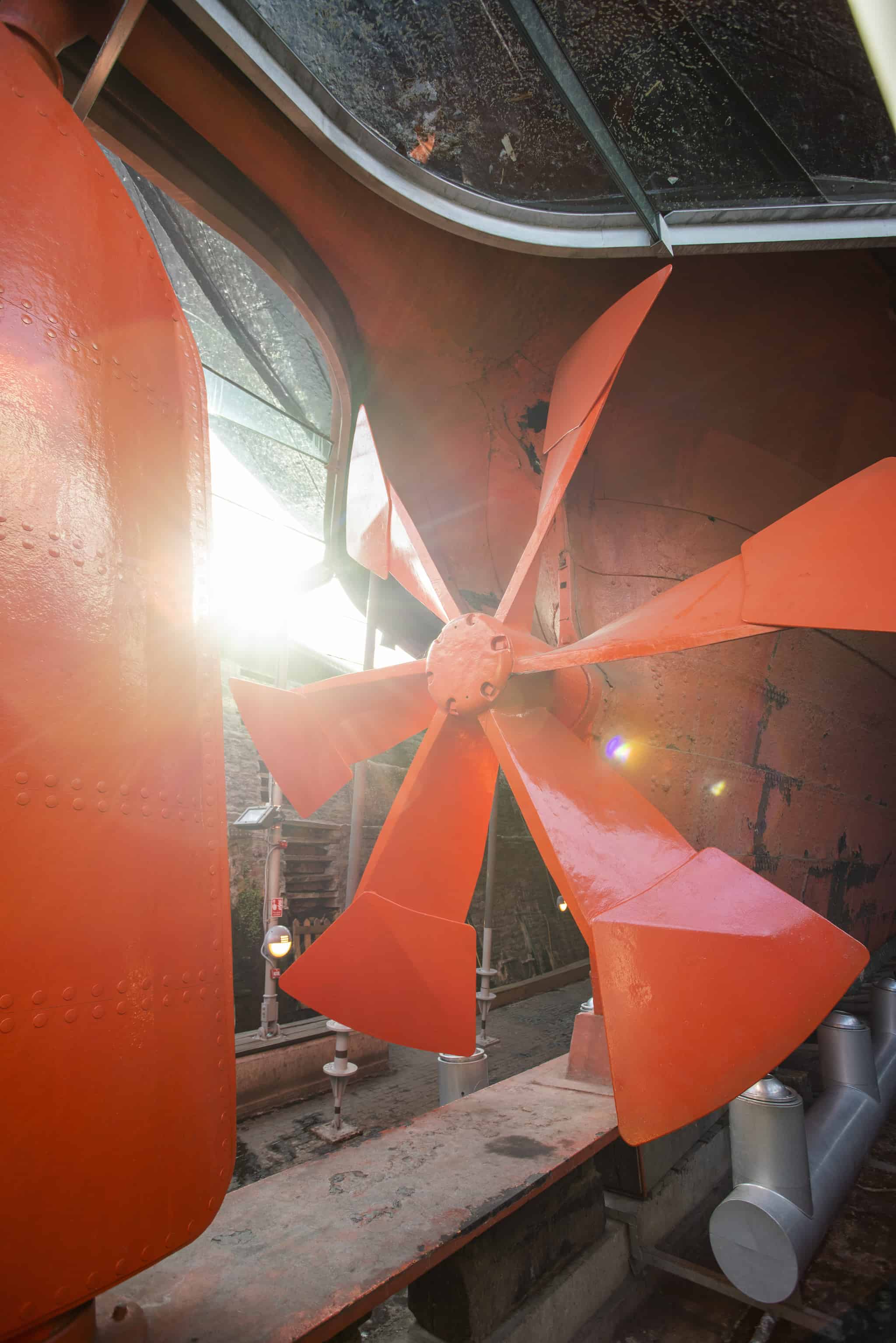Maya (Documentation Assist) has chosen the ‘Deepest’ book in the Collection
Although it isn’t the tallest or the widest, the 1924-25 Lloyd’s Register of Shipping Vol. 1 is certainly one of the deepest books in the collections. Measuring over 12cm deep, this volume is one of the 374 Lloyd’s Registers of Shipping held in the Brunel Institute.
The majority of the registers in our collection bear one of two marks on the cover; the anchor, used from 1775, or the ‘Ladybadge’ which first appeared in 1834 and adorns this cover. The badge depicts the titular lady in the foreground, an anchor by her feet and an open scroll in her hand. With the other she points, with serpent-entwined staff, toward one of the sailing ships behind her.
Phillippa (Assistant Curator) has chosen the oldest book in the Collection
Commonly referred to as Sir William Monson’s Naval Tracts, our version was published in 1703 which make it the oldest book we have. It was donated to the Brunel Institute by David MacGregor, a very knowledgeable maritime historian and draughtsman after whom the library is named.
The book was published by A. & J. Churchill, London and contains historical narratives and argumentative proposals to reform the Navy. It covers naval matters from Elizabeth I to James I, and includes – English-Spanish conflicts (plus some involving France), Sir Francis Drake’s voyages, English Admiralty hierarchy, Magellan and Columbus, fishing, piracy and trade. Sir William Monson (1568-1643) was an English Admiral and MP who ran away to sea in 1585, aged just 14, and who started to write his book in 1624.
Joanna (Maritime Curator) has chosen the most useful book for a Maritime Curator
The most useful book for a maritime curator has to be The Oxford Companion to Ships & the Sea, Peter Kemp (ed.), Oxford University Press, 1979.
Even an expert in maritime history or archaeology can sometimes come across an unfamiliar word they have never heard before. Not everyone knows off the top of their heads what a ‘gellywatte’ or a ‘monkey block’ is… The ‘Oxford Companion’ comes to the rescue as the font of all knowledge when it comes to strange maritime words and is one of the most useful books for any maritime curator.
Nick (Head of Collections) has chosen the newest book
At the moment much of my time is spent getting objects ready for the new Being Brunel Museum, which is due to open Spring 2018. As such I’ve been doing a LOT of reading on IK Brunel, so I’ve chosen one of his biographies, but with a bit of a twist – Isambard Kingdom Brunel : a graphic biography was produced in 2006 to mark the 200th anniversary of Brunel’s birth, and I like it because Brunel’s life involved some pretty remarkable events – floods, fires, explosions, speeding trains, crossing perilous ravines, etc – and sometimes a picture really is worth 1000 words!
Imogen (International Project Officer) has chosen a book with an international link
The SS Great Britain circumnavigated the globe and visited ports in Australia, India, Turkey and America. The passengers and crew were as international as the ship herself. Amongst others, they included a cook from Jamaica, a sailor from Greece and a passenger from Denmark, on his way to New Zealand with two friends.
I often come across books in foreign languages when researching in the library, especially books from Scandinavia, which has such a rich maritime history. This Danish book, “En Gyngende Bro” “M/F Broen” fra Storebaeltsfaerge til kulturfaerge, with a colourful front cover caught my eye when it was donated last month. The painting used as the front cover depicts foot passengers and cars departing on the ferry that connected Denmark and Sweden. Although now there is a bridge and the ferry is out of use, there are plans to create a museum which tells the life of these ferries.
The book is beautifully illustrated and the pages are peppered with photos of the crew. I’d love to be able to read the story of the ferry, perhaps learning Danish should be my next project!



